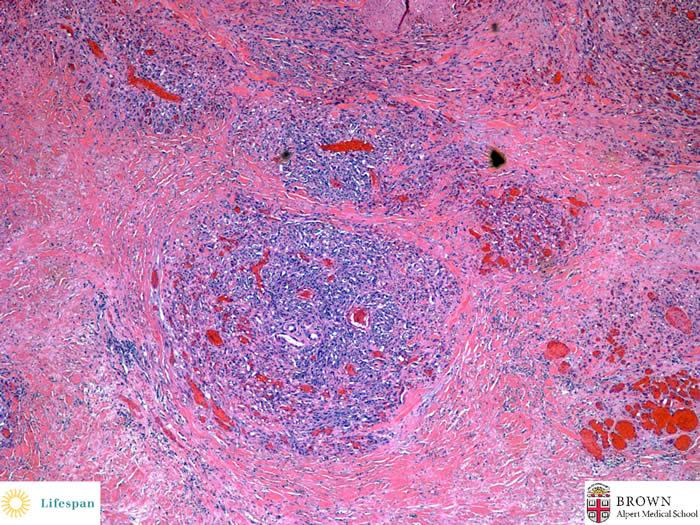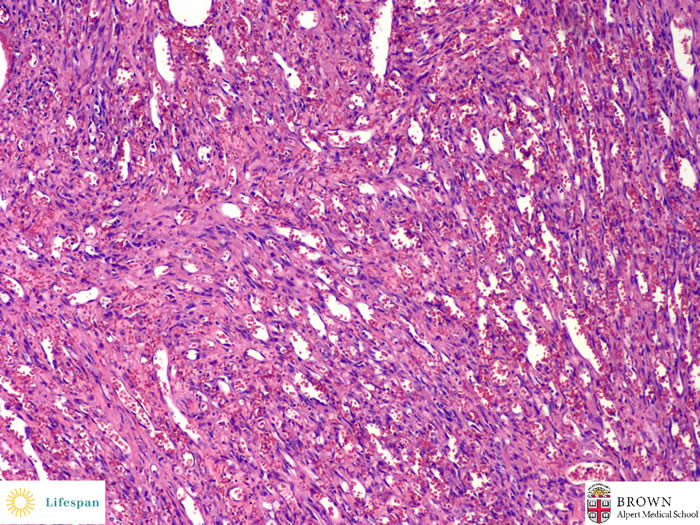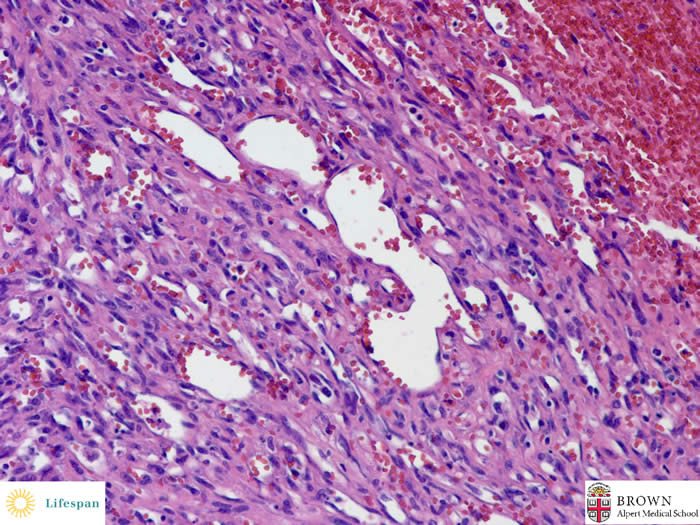
Angiosarcoma of the Breast
This is a 65-year-old female with a T1c breast cancer 6 years ago. She underwent surgical resection and radiation to the right breast and axilla followed by 5 years of endocrine therapy with anastrozole.

Grossly, the breast has multiple exophytic ulcerated skin nodules connecting to a deeper ill-demarcated infiltrative red/purple lesion of 7.0 cm in greatest dimension.




Under microscope, the lesion consists of a network of large, ill-orientated spindle cells intermixed with blood cells some forming irregular "vascular channels". Tumor cells are highly pleomorphic and hyperchromatic with prominent nucleoli.
High-grade angiosarcoma is the diagnosis. Given patient's past history of radiation, the tumor could possibly be related with prior irradiation. However, it is exceedingly difficult to distinguish a primary breast angiosarcoma from a postirradiation angiosarcoma. The interval between radiation and the occurrence of sarcoma is extremely variable but it usually exceeds a decade. Postmastectomy lymphangiosarcoma (Stewart-Treves Syndrome) arises in sites of chronic lymphedema many years after mastectomy. This patient did not have a mastectomy in her last surgery and did not show any sign of chronic lymphedema.
Contributed by Dr. Shaolei Lu and Dr. Rogers Griffith
r